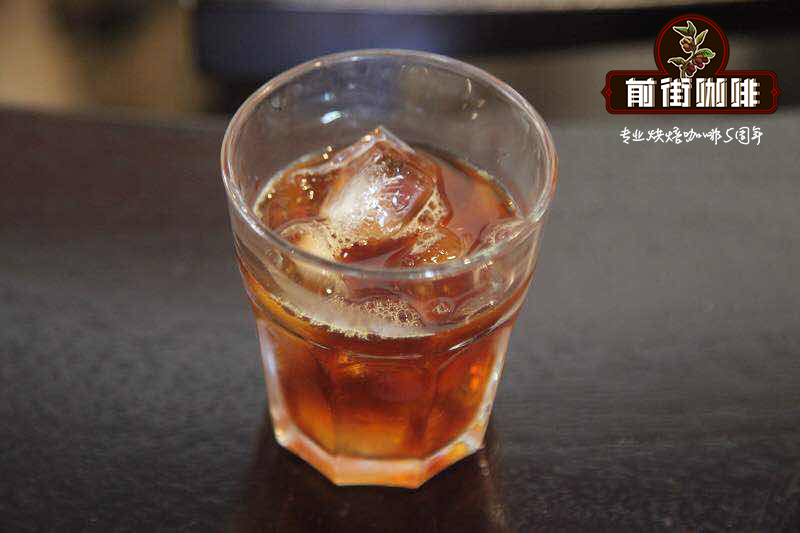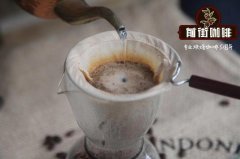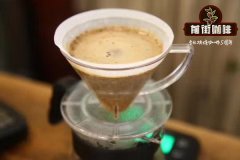The reason for the courage of Sumatran Coffee beans what kind of coffee beans is Mantenin?

Professional coffee knowledge exchange more coffee bean information please follow the coffee workshop (Wechat official account cafe_style)
Introduction to Qianjie-Sumatran Coffee and aged Manning Coffee
The most famous coffee producers in Asia are the islands of Malaysia: Sumatra, Java and Kaliman. Sumatra Manning coffee from the Indonesian island of Sumatra is the most famous. Therefore, Mandarin Coffee is also individually called "Sumatran Coffee".
Its flavor is very rich, fragrant, bitter, mellow, with a little sweetness. Most coffee lovers drink on their own, but it is also an indispensable variety for blending coffee. Manning coffee is rich and solid in taste and has a pleasant sour taste.
The smell is mellow, the acidity is moderate, the sweetness is rich and very intriguing, it is suitable for deep baking and exudes a strong aroma. Mandenin is not the name of the producing area, the place name, the port name, nor the name of the coffee breed. The origin of its name is actually a phonetic error of the Mandaining mandheling people in Indonesia.
According to Sumatra, during the Japanese occupation of Sumatra during World War II, a Japanese soldier drank mellow coffee in a cafe and asked the boss curiously: what kind of coffee is this?
The boss mistakenly thought the Japanese soldier was asking: where are you from? So the boss replied: Mandaining. After the war, the Japanese soldier remembered that the delicious coffee he had drunk in Indonesia seemed to be called Mantening, so he asked an Indonesian coffee broker to deliver 15 tons of Mantenin coffee to Japan, which was very popular. Perhaps it is because it was once a colony or because of the Anti-Japanese War, so Sumatran coffee has the meaning of courage.
Old Manning
Indonesia's aged beans are most famous for Mantenin and Java Old Brown. After a certain degree of treatment and long-term storage, the sour ingredients of coffee beans are precipitated and converted into sugar, making the coffee more round. Aged Mantenin tastes so sweet that it is most suitable for making individual or espresso.
Knowledge Gift: gold manning is made by Pwani Coffee Company, a Pwangni coffee company, acquired locally in Indonesia. Almost all of the best producing areas in Indonesia have been acquired by this company, so they have the name gold manning, and most of the beans from PWN are unique boutiques.
END
Important Notice :
前街咖啡 FrontStreet Coffee has moved to new addredd:
FrontStreet Coffee Address: 315,Donghua East Road,GuangZhou
Tel:020 38364473
- Prev

Sumatran Coffee Coffee introduces how much it costs per jin
For more information about coffee beans, please follow the Coffee Workshop (Wechat official account cafe_style) Front Street-Sumatran civet Coffee although civet is distributed in Indo-China, India (northeast), Bangladesh, Bhutan, Sikkim, Nepal and Kashmir. But only Sumatran civets can produce Kopi Luwak. And they are raw.
- Next

Which Kenyan coffee brand is better? the right way to share black coffee
Professional coffee knowledge exchange more coffee bean information please follow the coffee workshop (Wechat official account cafe_style) front street-Kenya coffee brands, production methods introduction Kenya coffee quality control is very strict, by the Kenyan government established the official unit Kenya Coffee Agency (referred to as CBK), established in 1933, in the capital Nairobi (Nairobi) Coffee Exchange
Related
- Beginners will see the "Coffee pull flower" guide!
- What is the difference between ice blog purified milk and ordinary milk coffee?
- Why is the Philippines the largest producer of crops in Liberia?
- For coffee extraction, should the fine powder be retained?
- How does extracted espresso fill pressed powder? How much strength does it take to press the powder?
- How to make jasmine cold extract coffee? Is the jasmine + latte good?
- Will this little toy really make the coffee taste better? How does Lily Drip affect coffee extraction?
- Will the action of slapping the filter cup also affect coffee extraction?
- What's the difference between powder-to-water ratio and powder-to-liquid ratio?
- What is the Ethiopian local species? What does it have to do with Heirloom native species?

